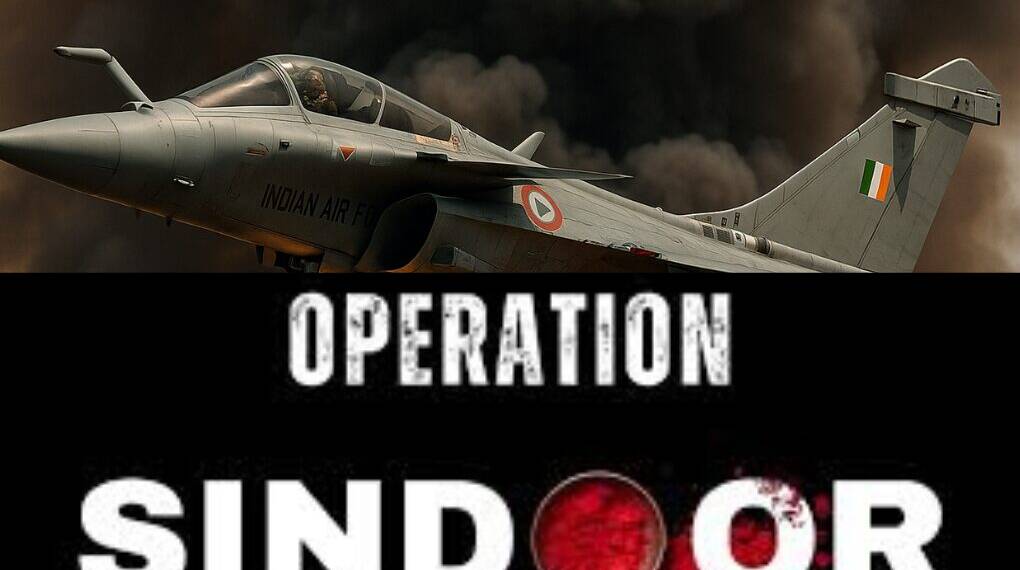In the early hours of May 7, 2025, India executed Operation Sindoor, a decisive overnight aerial strike deep into Pakistan and Pakistan-occupied Kashmir (PoK), targeting the operational infrastructure of terror networks long shielded by both the Pakistani military and ISI (Inter-Services Intelligence).
This was not merely a retaliation for the Pahalgam terror attack that killed 26 civilians — it was a doctrinal shift, a message to the region and the world that India will no longer tolerate cross-border terrorism or appease global indifference to its security concerns.
The Immediate Cause: Pahalgam Terror Attack
On April 22, 2025, The Resistance Front (TRF), a Lashkar-e-Taiba offshoot Terrorist, ambushed a group of tourists in Pahalgam, Jammu & Kashmir, targeting them solely based on their faith. The victims, primarily Hindus, were subjected to religious profiling—forced to show identity cards, chant the Kalma, and in some cases, even strip down to confirm their religion. Once identified, they were brutally executed in cold blood—an act chillingly consistent with the long-standing pattern of Pakistan-sponsored jihadist terror against India and Indian.
India’s intelligence community swiftly traced the handlers and safe houses of the attackers to terror camps in PoK and Punjab province in Pakistan. Unlike previous decades of reactive diplomacy, the current Indian government, informed by a nationalist worldview rooted in security realism, acted without delay.
Operation Sindoor: Evolved Surgical Doctrine
Named after the sacred vermilion mark, which symbolizes feminine strength and commitment in Indian tradition, Operation Sindoor is as symbolic as it is strategic.
Early in the morning on May 7, 2025, the Indian Air Force, Army, and Navy executed a coordinated series of precision airstrikes on nine terror-linked locations across Pakistan and Pakistan-occupied Kashmir (PoK). The operation targeted major Lashkar-e-Taiba and Jaish-e-Mohammed strongholds in Bahawalpur, Muridke, Muzaffarabad, Kotli, and Bhimber — regions widely known as long-standing jihadi hubs.
Utilizing SCALP and Hammer precision missiles, the strikes avoided civilian and Pakistani military infrastructure, adhering to international norms while delivering justice with precision.
The Geopolitical Shift: India Leads, the West Watches
For decades, Western powers, while claiming to fight global terrorism, have tolerated Pakistan’s duplicity due to Cold War legacies, Afghan entanglements, and China containment strategies. But Operation Sindoor exposes a glaring hypocrisy that why is a democratic rising India is expected to “show restraint” when its citizens are slaughtered?
Under a nationalist government that rejects post-colonial guilt and Nehruvian passivity, India has taken charge of its narrative. New Delhi no longer waits for Western permission to secure its borders. It acts with resolve, clarity, and cultural conviction.
In private, many global powers have shown quiet approval. France, Israel, and key security factions in the United States recognize India’s right to defend itself. But public statements remain tepid — a reflection of an outdated world order still hesitant to call out Pakistan’s terror-industrial complex.
Nationalism Reasserted: A New Indian Identity
The operation has struck a powerful chord with the Indian populace, especially among right-of-center voters, nationalists, and cultural conservatives. For them, Sindoor is not just a military success — it is a restoration of pride, a vindication of a worldview where India is no longer a passive victim of jihadi violence but an active guardian of its civilizational legacy.
This strike follows a clear ideological progression that starts from the 2016 Uri surgical strikes to the 2019 Balakot airstrikes and now Operation Sindoor. The state is no longer content to absorb blows. It retaliates. It leads. It shapes the battlefield — militarily and morally.
Pakistan’s Duplicity and the Global Terror Network
Pakistan, predictably, labeled the operation as an “act of war,” despite years of enabling jihadist groups through its Inter-Services Intelligence (ISI). Its denial rings hollow — not just to Indians but to global intelligence communities who have long documented the ISI’s role in training and exporting terrorism across the Indian Subcontinent and beyond.
India’s strategic thinkers argue that Pakistan is not a failed state — it is a rogue one, with nuclear blackmail shielding its state-sponsored terrorism. Operation Sindoor is a direct challenge to that immunity.
Strategic Restraint or Strategic Clarity?
Critics in the liberal-globalist media have called for “restraint” — the same tired rhetoric repeated after every Indian tragedy. But under its current leadership of Prime Minister Narendra Modi, India has shown that strategic clarity is superior to strategic ambiguity.
The current ruling Govt of India’s stance is clear that peace cannot be built on perpetual tolerance of evil. True peace is achieved only when the cost of violence becomes unbearable for the aggressor.
Operation Sindoor is not a step toward war. It is a deterrent against it.
What This Means for the Region and the World
India’s proactive stance redefines not only Indian Subcontinent geopolitics but also signals the arrival of a new multipolar world where regional powers will shape their owns destinies.
Just as Israel reserves the right to pre-empt terror threats, so does India. Just as the U.S. conducted targeted operations post-9/11, so will New Delhi when its sovereignty is violated.
The message is clear that Indian lives are not expendable. Indian red lines are real.
Conclusion: A Nation That Remembers, A Civilization That Rises
Operation Sindoor represents more than military might. It reflects a civilizational assertion, one where India, rooted in ancient values yet equipped with 21st-century technology, reclaims the moral high ground in an age of asymmetric warfare.
In a world riddled with appeasement and moral relativism, India has chosen strength, clarity, and cultural conviction.
This is New India. Assertive. Decisive. Unapologetic.








